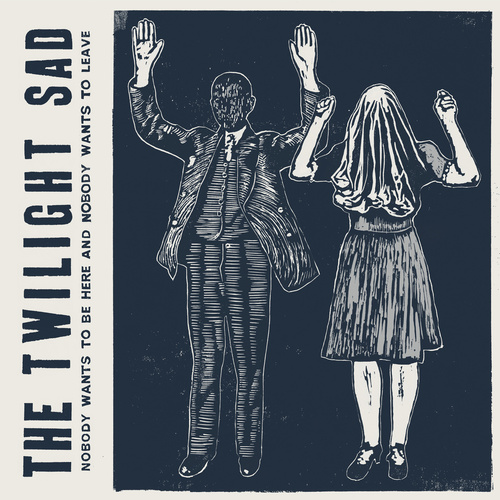I recently listened to The National’s Matt Berninger talk to Bret Easton Ellis on the latter’s self-titled podcast. Whatever you think of Ellis, he opened up the discussion to some pretty interesting territory on the subject of darkness in art, asking whether Berninger’s music comes from pain and despair. Berninger acknowledged that depression and anxiety drive his creativity, but said that he does not see himself as a melancholy person. Instead, he goes into a zone, delves into a place where his own issues and emotions fuel the creation of separate, melodramatic narratives and ideas (melodrama here is a good thing).
This idea made me think of the The Twilight Sad. The band have been labelled along a spectrum, from grumpy, dour Scots to a more extreme, probable-trauma-as-a-child sort of category. While it’s understandable that people will take what an artist presents as some clue as the nature of its creator (they have nothing else to go on, after all), to see albums or careers written off as miserable, aloof or frigid based on the artwork and some cherry-picked lyrics is not only unfair, but also missing the point quite spectacularly (FYI Lead James Graham has nice supportive parents).
Nobody Wants to Be Here… is the The Twilight Sad’s fourth album. Their début, Fourteen Autumns and Fifteen Winters, was a critically acclaimed masterpiece, but the others, all too often lumped in with the more saleable Frightened Rabbit and We Were Promised Jetpacks, were overlooked for the most part. Graham told The Skinny that the new record is an attempt “not to prove people wrong, but to prove people right,” and it is immensely pleasing to see that this does not mean conforming to a trend but working doubly hard at what TTS are best at.
[soundcloud url=”https://api.soundcloud.com/tracks/163109818″]
‘There’s a Girl in the Corner’ opens on a familiarly unsettling vibe, the refrain “you’re not coming back, you’re not coming back from this” hinting at something awful. This indirect method of delivery continues across the album. To choose a few examples, ‘Last January’ is bitter and unrequited and creepy in a desperate way…
“I see you at night,
and I stare at you
You don’t care for me
Without the light,
I still glare at you,
look away from me”
…and ‘I Could Give You All That You Don’t Want’ mixes specific imagery with a dream-like fogginess…
“She said “Pray over there”
She sat and prayed over there
How dare you decide what’s right?
No, you won’t”
This continues throughout the album, until the final track, ‘Sometimes I Wished I Could Fall Asleep,’ a bleak love letter stripped back to the bare bones, just stark piano and Graham’s lyrics. The layers of metaphor are peeled back to produce what is the explicit song on the record, a simple, straight conclusion to what proves a complex piece of work.
The effect the indistinct writing is that of trying to view a disaster unfold through a keyhole, only opening the door once it is too late and the room is empty save for the hum in the air of residual violence or grief. Only Graham seems unable to fully accept what has happened out of sight and instead treads the thinnest, most ridiculous sliver of hope rather than lay down and unravel.
The moral of the album, looping right back around to Berninger and Ellis, is that dark music does not always make for miserable creators or listeners. I’m reminded of the line in Withered Hand’s ‘Religious Songs’, “how does he expect to be happy when he listens to death metal bands?” The Twilight Sad are excellent for the very reason that they deal with pain and darkness in an affirming way, opening up difficult, alienating emotions to show that we are all difficult, emotional aliens. And that we are these things together.
You can buy the album now from FatCat Records, The Twilight Sad’s website or their Bandcamp page.

